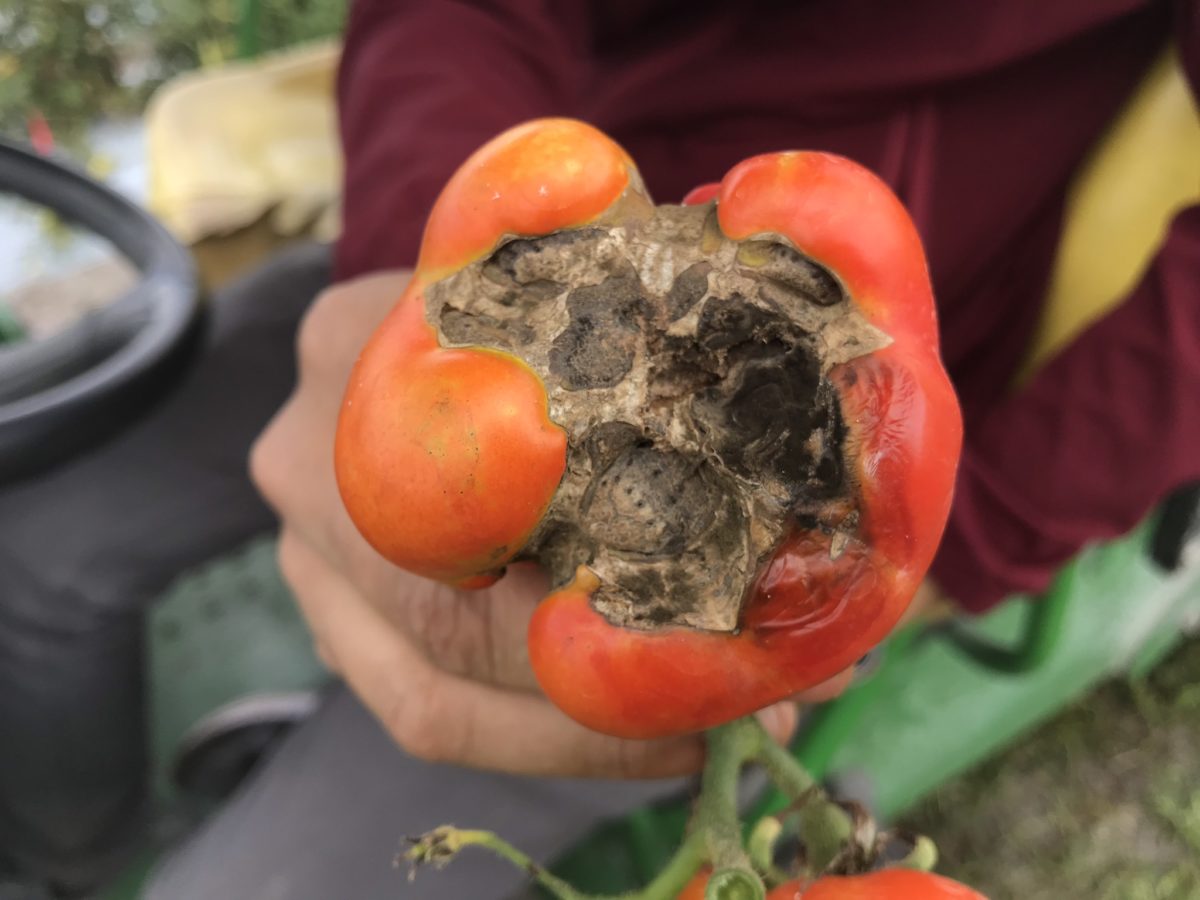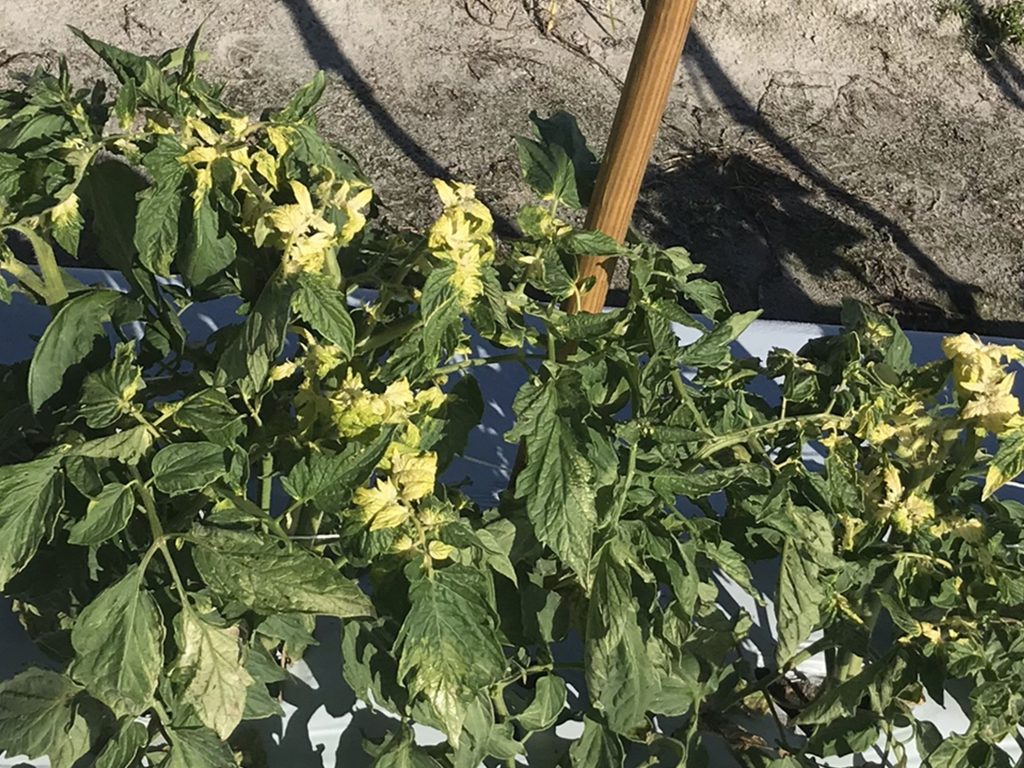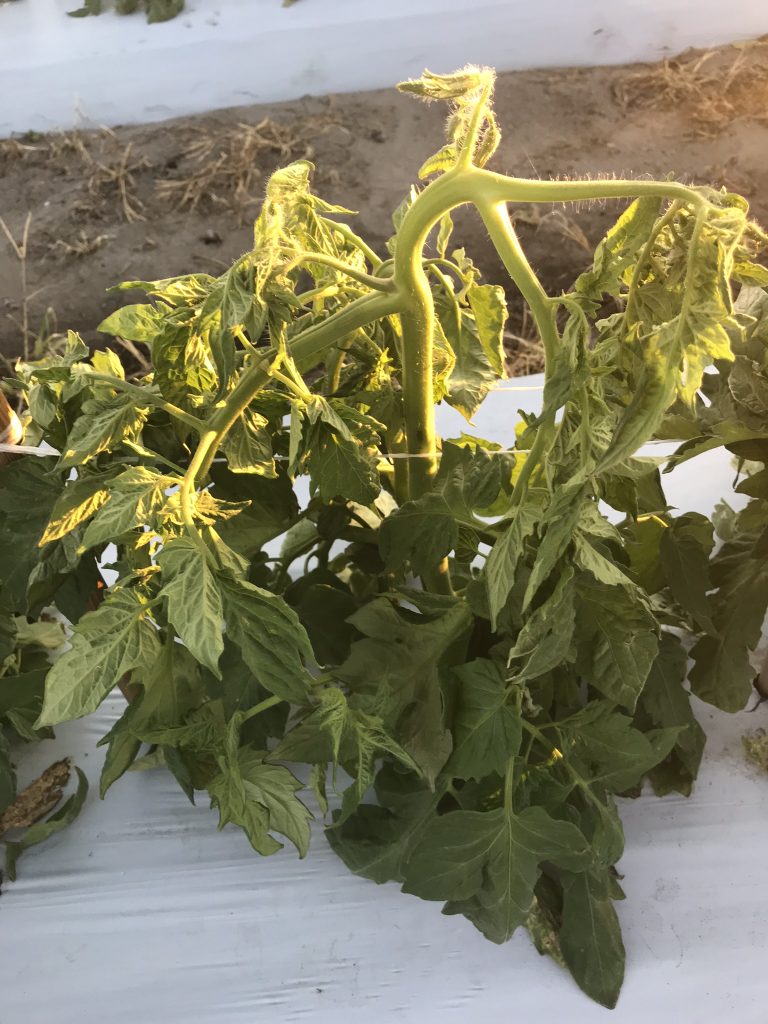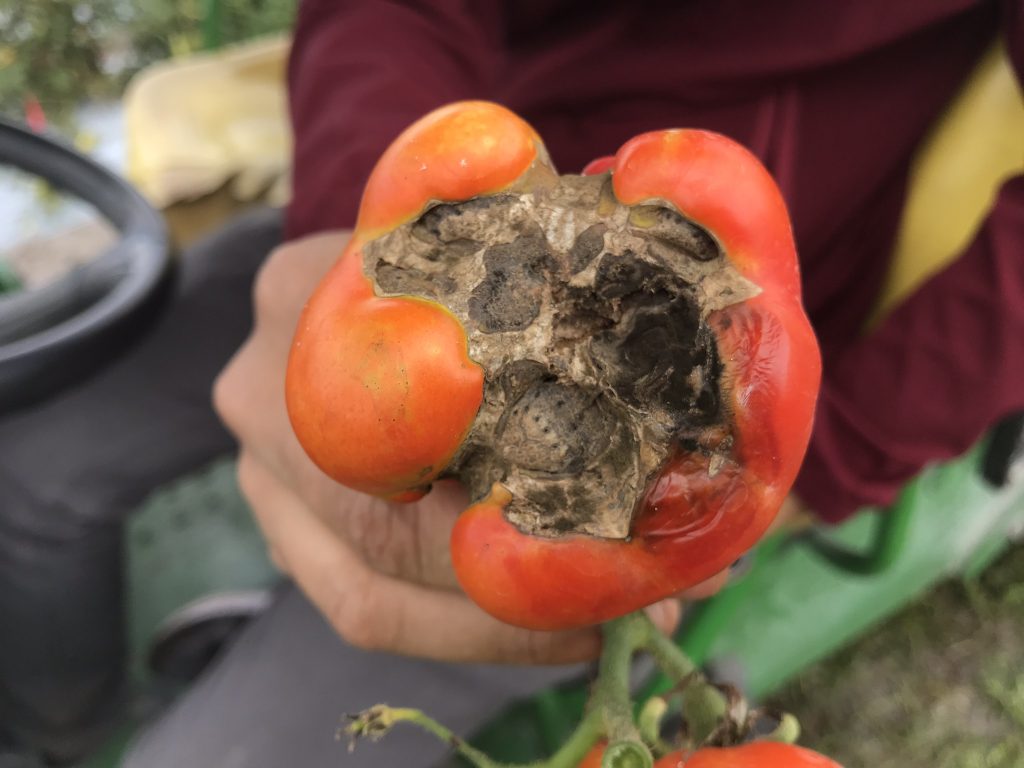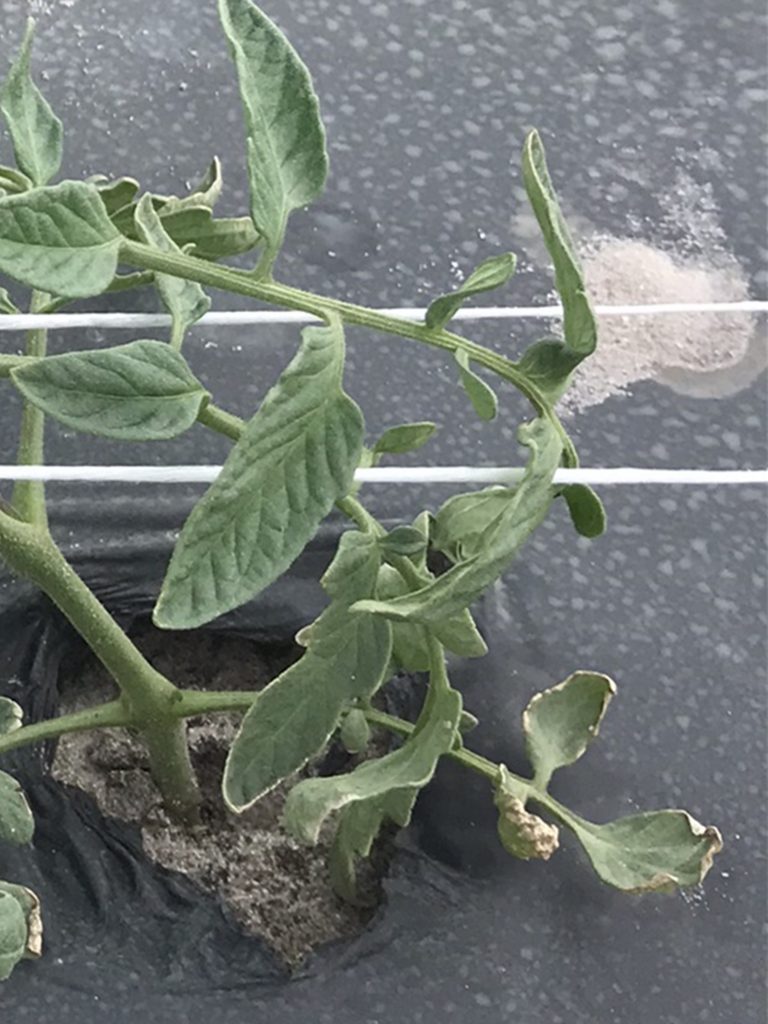Understanding herbicide injury in tomatoes can help growers protect their investment.
By Ramdas Kanissery, Nathan Boyd and Camille McAvoy
Herbicides are designed to control undesired plants within a cropping system. Crop injury can occur when herbicides are applied incorrectly. For example, injury can be the result of drift, volatilization, runoff, tank contamination or misapplication of a product.
INJURY SYMPTOMS
Injury can occur in many
forms. Visible symptoms can include chlorosis, necrosis and reduced growth or
vigor. Delayed symptoms can also occur, such as reduced yield through flower
abortion or reduction in fruit quality. It is not unusual for herbicide injury
to be confused with other pest (insect or disease) damage.
When herbicide injury is suspected, start by answering the following questions:
- When did the signs of damage first appear?
- Is there a pattern to the damage?
- Is it located in only one spot or multiple locations?
- Is the damage random or is there an apparent pattern?
- What herbicides were applied recently both on the farm and in adjacent (non-farm or neighbors) areas?
Answering these questions along with the severity of the damage can indicate the direction in which the herbicide moved or drifted. Remember, the potential for injury varies with the application methods, rate (exposure intensity) and stage of plant growth.
Glyphosate and 2,4-D are two commonly used herbicides in citrus and pasture, respectively. When tomato plants in farms adjacent to citrus groves and pastures are exposed to sublethal doses of these herbicides, injury can result.
The whitening or bleaching of the apical meristems is the most identifiable symptom of glyphosate phytotoxicity in tomatoes (Figure 1). Higher doses of glyphosate can result in upward curling, browning of leaf edges or “strapping” of leaves. Glyphosate phytotoxicity in tomato is often confused with physiological leaf roll, which is caused by hot weather.
Tomatoes are highly sensitive to synthetic auxin herbicides such as 2,4-D. Even the smallest exposure can cause a multitude of symptoms. The elongation and twisting of stems, yellowing of veins, deformed petioles and downward cupped leaflets are all symptoms of 2,4-D exposure (Figure 2).
Exposure to 2,4-D results in brown coloration on the tomato stem. 2,4-D phytotoxicity resembles viral disease symptoms (stem twisting and leaf distortion). Post-exposure to either of these herbicides may result in fruit deformation in tomato.
IMPACTS ON YIELD AND MARKETABILITY
Fruit deformations (often called “cat-facing” in tomatoes) are a result of physiological stress that encumbers normal fruit development. These deformations may be large scars, cavities at the blossom end, kidney-shaped fruit or other unusual shapes (Figure 3). Insufficient data exist on the cause of fruit deformation, but exposure to herbicides has been considered one of the primary reasons.
In a study conducted recently at the University of Florida Institute of Food and Agricultural Sciences (UF/IFAS) Southwest Florida Research and Education Center (SWFREC), reduction in yield was observed due to herbicide exposure-related fruit deformities. For instance, glyphosate and 2,4-D drift have been found to cause cat-facing or misshapen fruit to develop in tomatoes, especially at higher rates.
The fruit deformation and reduction in the marketable yield was correlated to the timing of herbicide exposure. Tomato plants exposed in a pre-bloom stage or early growth stage to glyphosate and 2,4-D had foliar damage and significantly lower marketable yields than the plants that had exposure at a mature growth stage.
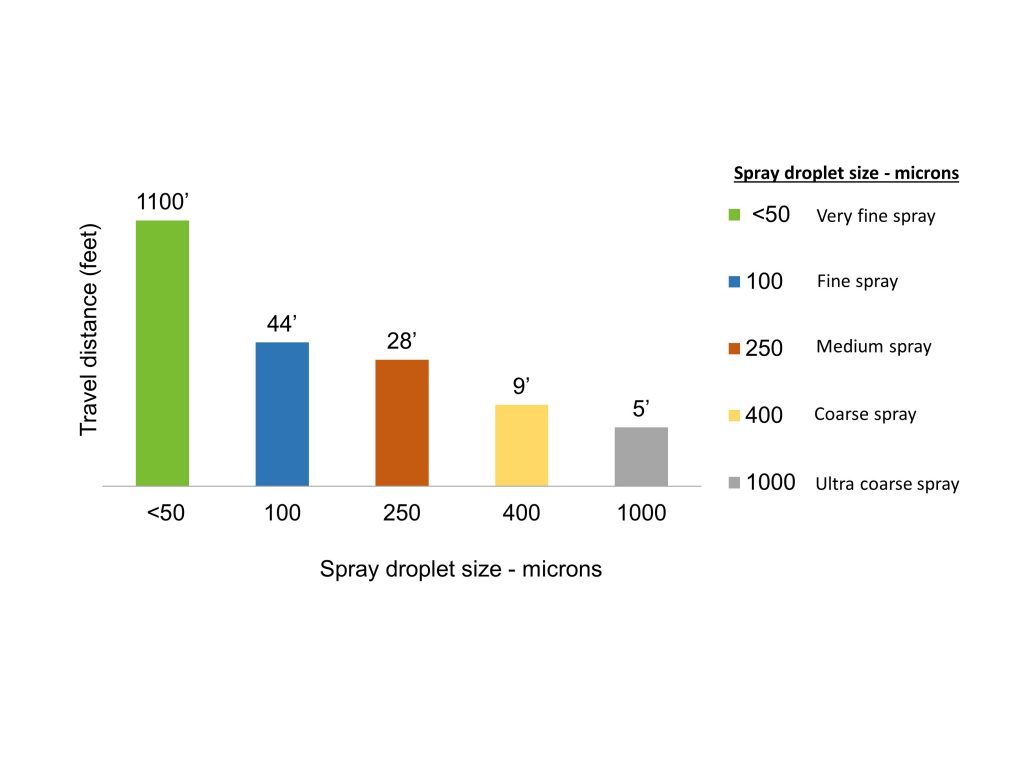
PREVENTION AND MANAGEMENT
Some management strategies to prevent herbicide injury include reducing drift, preventing cross-contamination and being aware of previously applied herbicides. Drift reduction is the number-one way to manage herbicide injury of a non-target crop. The drift potential is dependent upon the spray droplet size and weather conditions at application. The rule of thumb is that as the spray particle size decreases, the potential for drift increases (Figure 4).
Drift hazard is reduced when a spray nozzle that produces relatively large spray droplets is selected. Applications of herbicides during high temperatures and winds will increase herbicide volatilization and movement. Remember to read the herbicide label and follow the instructions for application rates. Off-label rates may result in herbicide drift. Prevent cross-contamination by dedicating a sprayer for herbicides. Spray tanks should be cleaned after each use according to the label.
Many herbicides have some level of carryover or persistence in the soil. This persistence can damage plants due to herbicides being present in the root zone (Figure 5). Flooded fields from storms and inadequate drainage can facilitate lateral herbicide movement across a farm.
Herbicide bioassays and soil analysis for herbicides can be helpful in detecting if soils have residues below an injury threshold. Bioassays involve using indicator plants to test if an herbicide is present in a concentration high enough to cause damage to plant growth or seed germination.
Ramdas Kanissery is an assistant professor and Camille McAvoy is a laboratory technician, both at the UF/IFAS SWFREC in Immokalee. Nathan Boyd is an associate professor at the UF/IFAS Gulf Coast Research and Education Center in Wimauma.
This article was featured in the March issue of VSCNews magazine. To receive future issues of VSCNews magazine, click here.
Share this Post










